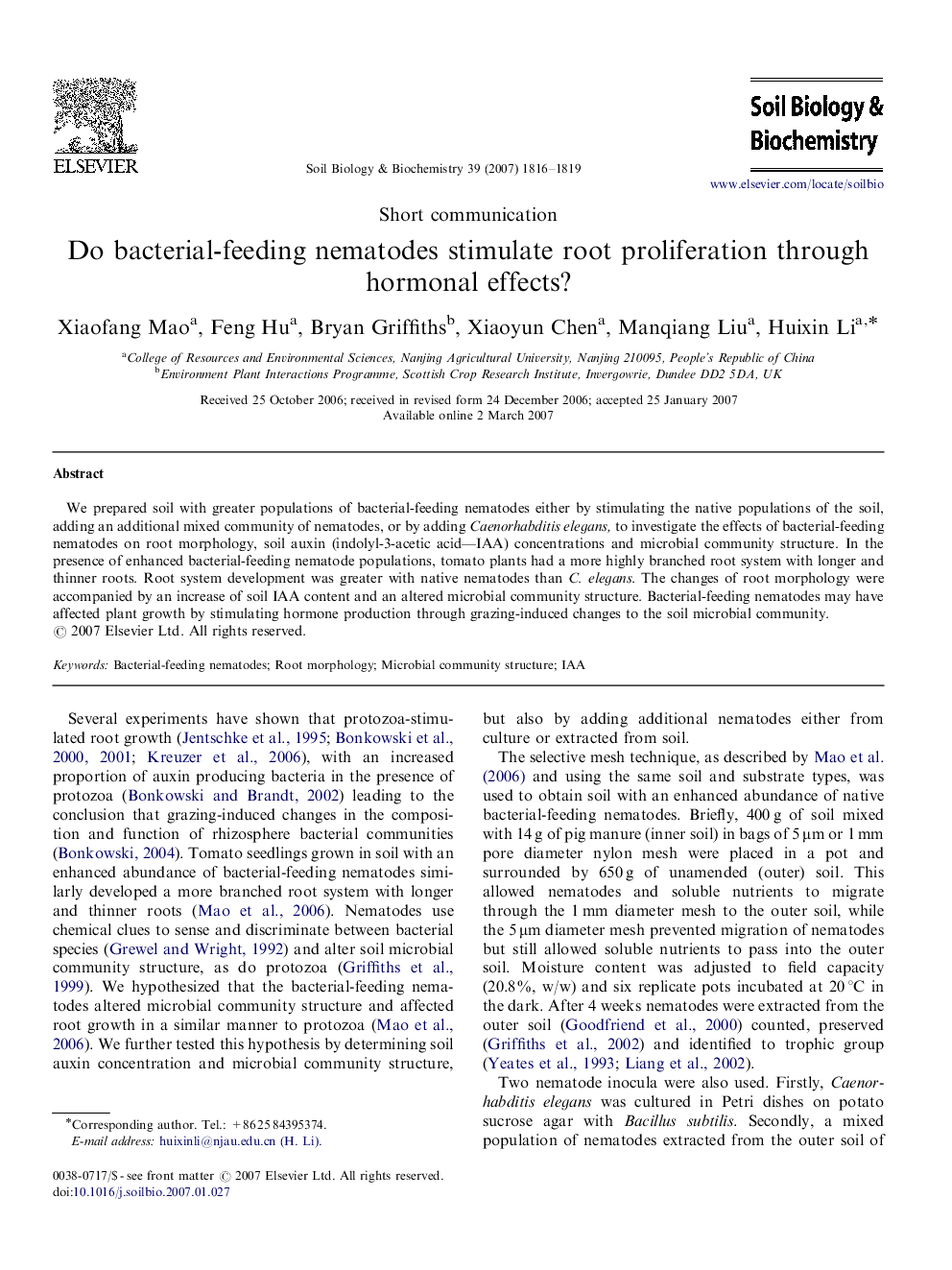| Article ID | Journal | Published Year | Pages | File Type |
|---|---|---|---|---|
| 2026249 | Soil Biology and Biochemistry | 2007 | 4 Pages |
We prepared soil with greater populations of bacterial-feeding nematodes either by stimulating the native populations of the soil, adding an additional mixed community of nematodes, or by adding Caenorhabditis elegans, to investigate the effects of bacterial-feeding nematodes on root morphology, soil auxin (indolyl-3-acetic acid—IAA) concentrations and microbial community structure. In the presence of enhanced bacterial-feeding nematode populations, tomato plants had a more highly branched root system with longer and thinner roots. Root system development was greater with native nematodes than C. elegans. The changes of root morphology were accompanied by an increase of soil IAA content and an altered microbial community structure. Bacterial-feeding nematodes may have affected plant growth by stimulating hormone production through grazing-induced changes to the soil microbial community.
